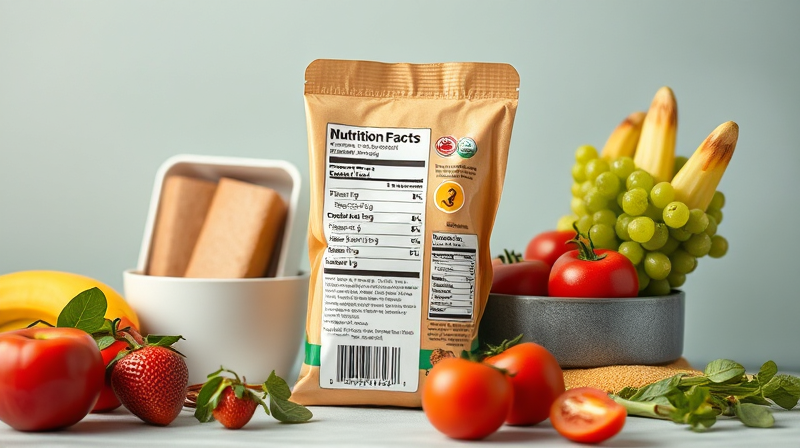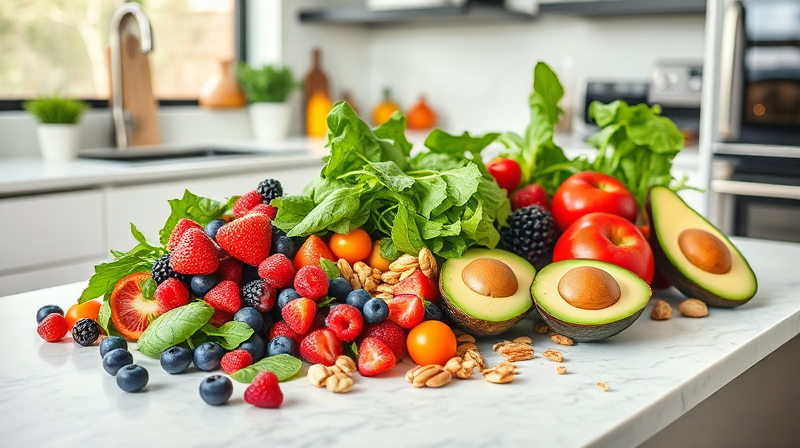In today’s fast-paced world, taking the time to read nutrition labels is one of the most empowering steps you can take towards a healthier lifestyle. Understanding what goes into your food not only helps you manage your weight but also ensures you are consuming a balanced diet full of essential nutrients. With the ever-changing landscape of food labeling standards and updates, being informed is more important than ever.
Nutrition labels are designed to provide you with critical data about the food you eat. At a glance, these labels can help you understand the caloric content, serving size, and nutrient breakdown. However, many people overlook the fine details due to how complex these labels often seem. With a little guidance, you can start using them to your advantage.
Key Elements of Nutrition Labels
One of the first components to focus on is the serving information. The serving size represents the typical amount of the food that is eaten, and all the nutritional data is based on this reference number. It is common for a container to hold more than one serving, meaning that if you consume the entire package, you should adjust the nutritional values accordingly.
Another crucial aspect is the calorie count. The labeling reforms have made calories more noticeable by using a bold and large font, which helps you quickly assess how a particular food item fits into your daily intake. Caloric awareness is essential for managing energy balance and preventing overconsumption.
Equally important is understanding the nutrients that you should limit. Key focus areas include saturated fats, sodium, and added sugars, which have been consistently linked to chronic health problems when consumed excessively. The FDA recommends keeping these nutrients in check as part of an effort to prevent conditions such as hypertension, heart disease, and diabetes.
On the other hand, nutrition labels also highlight several nutrients that are beneficial for your health. Emphasis is now placed on dietary fiber along with essential vitamins and minerals like vitamin D, calcium, iron, and potassium. The inclusion of these nutrients on the labels is meant to guide you towards more wholesome food choices that can boost your overall health. Keeping an eye on these beneficial elements can help ensure you meet your body’s daily requirements.
- Servings: Always check the serving information first as all the data is based on this measurement.
- Calories: Notice the bold font used for calorie information to quickly gauge energy intake.
- Nutrients to Limit: Keep saturated fats, sodium, and added sugars on the radar to reduce the risk of chronic diseases.
- Nutrients to Encourage: Focus on incorporating fiber, vitamins, and minerals that are essential for your health.
A largely useful part of nutrition labels is the Percent Daily Value (%DV). This value tells you how much a nutrient in a single serving contributes to the daily diet, based on standard nutritional recommendations. Generally, a %DV of 5% or less indicates that the food is low in a particular nutrient, while a %DV of 20% or more suggests a high level. This system can simplify making healthier choices by providing context in just a few seconds.
More recently, the concept of front-of-package (FOP) labeling has been introduced. In January 2025, new guidelines were proposed by the FDA to include a simplified FOP nutrition label on most packaged foods. This format, often referred to as the Nutrition Info box, helps you quickly assess the levels of saturated fat, sodium, and added sugars. Foods are marked with qualitative indicators such as "Low," "Med," or "High". This is especially helpful when you are in a rush and need an immediate idea about the nutritional value of your snacks or meals.
Additional visual tools such as color-coded systems have been adopted by several countries to further enhance the ease of nutrition label interpretation. These systems use colors like red, amber, and green to denote high, medium, and low levels of certain nutrients respectively. Adopting such visual cues can be incredibly useful if you are trying to avoid specific ingredients at a glance.
Another component on the label is the ingredient list. This list, which is arranged by the weight of the components in the food item, provides insight into what is actually in your food pack. If you notice an ingredient list that contains many unfamiliar or long-named chemicals, it might be an indicator of a highly processed food. Choosing products with shorter ingredient lists and clear, recognizable names can be a smart move towards better eating habits.
For individuals with food allergies, the allergen information on the label is indispensable. Clear labeling of potential allergens such as nuts, dairy, gluten, or soy is critical to avoid adverse reactions. Being well-informed by checking these details can help ensure your health and safety while consuming packaged foods.
Nutrition labels are more than just numbers on a package – they are a road map to understanding what you eat every day. Knowledge empowers you to make better choices and small changes can have lasting impacts on your overall health. As food manufacturers continue to update their labels based on evolving nutritional science, staying current on these changes can offer additional benefits in managing your diet.
Taking these steps to understand nutrition labels can turn what once might have been a daunting task into a simple and enlightening habit. By reading and comprehending nutritional information, you become a more conscious consumer who values your well-being. The goal is to foster a healthier lifestyle through informed choices that can lead to better energy levels, improved digestion, and long-term well-being.
Remember, knowledge is the first step towards empowerment, and with these tools at your disposal, you are well-equipped to navigate the food industry with confidence and care. Your health is one of your greatest assets, and by becoming fluent in the language of nutrition labels, you are taking a significant stride in protecting and nurturing it.
Let this guide be your starting point on a journey towards better eating habits and overall health. With every new food choice made, you are investing in a better, more vibrant life. Keep exploring, stay informed, and let every meal be a chance to nourish your body and mind.








